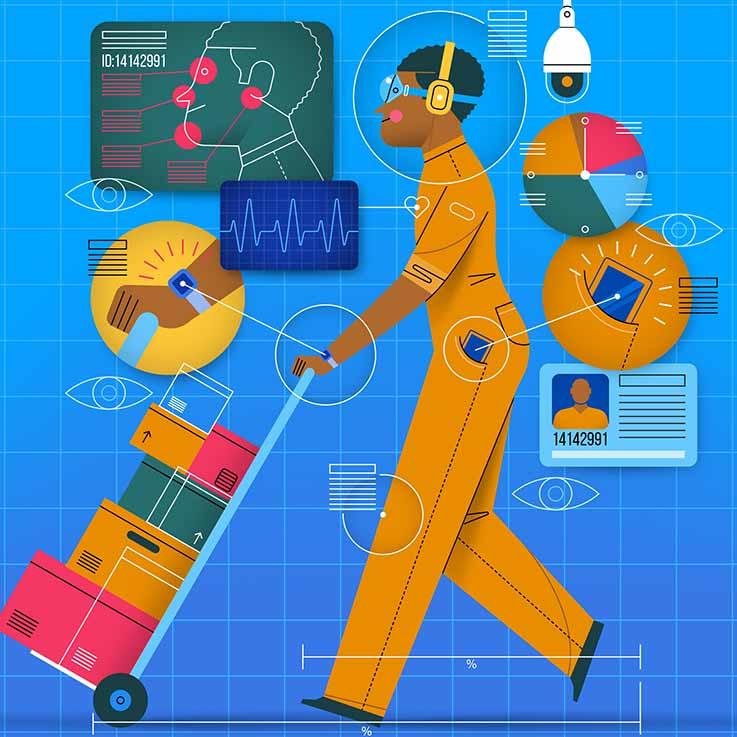In an era where technology increasingly blurs the line between connectivity and surveillance, a new innovation is turning heads by taking Wi-Fi signals to an unexpected frontier. WhoFi, a cutting-edge system unveiled by researchers, uses the subtle disturbances people cause in wireless signals to pinpoint their location-no cameras, no wearables, just the invisible ripples in the digital air. This breakthrough not only promises intriguing applications in security and smart environments but also raises profound questions about privacy in a world where even the faintest invisible waves can betray your presence.
WhoFi Technology Decodes Human Presence Through Wi-Fi Signal Disturbances
At the core of this groundbreaking innovation lies the ability to interpret subtle fluctuations in Wi-Fi signals caused by human movement. Traditional tracking methods often rely on cameras or specialized sensors, but this technology leverages existing Wi-Fi infrastructure to detect presence and motion with remarkable precision. By analyzing minute disturbances in signal patterns, the system can differentiate between various activities such as walking, sitting, or even gesturing, transforming everyday wireless signals into a powerful source of spatial awareness.
What makes this approach particularly compelling is its non-invasive nature and versatility. It doesn’t require individuals to carry any devices or wearables, and it operates effectively even through walls and obstacles. Integrated with smart environments, the technology opens doors to applications in security, elder care, and smart home automation. Below is a quick comparison of key attributes that set this technique apart from conventional monitoring tools:
| Feature | WhoFi Wi-Fi Tracking | Conventional Surveillance |
|---|---|---|
| Device Requirement | None | Wearables or cameras |
| Privacy Consideration | High (signals only) | Lower (video/audio) |
| Environmental Penetration | Through walls | Line of sight |
| Activity Recognition | Yes | Variable |
Exploring the Ethical and Privacy Implications of Passive Wi-Fi Surveillance
Passive Wi-Fi surveillance technology, such as the one introduced by WhoFi, raises profound questions about how privacy is redefined in public and semi-private spaces. By tracking individuals based solely on the unique ways their bodies interfere with Wi-Fi signals, this method bypasses traditional identifiers like cameras or GPS, making it a stealthy yet powerful tool. While proponents argue for its potential in improving security and optimizing space usage, critics highlight the risk of unchecked monitoring that could infringe on personal privacy without explicit consent. The invisible nature of this tracking disrupts established ethical frameworks, challenging society to reconsider the boundaries between safety, anonymity, and autonomy.
Key considerations include:
- Transparency: Should individuals be informed when their presence is monitored via signal disruption?
- Data ownership: Who controls and profits from the captured Wi-Fi signature patterns?
- Potential for misuse: Could such technology be weaponized for unauthorized surveillance or discrimination?
| Aspect | Opportunity | Challenge |
|---|---|---|
| Consent | Implement opt-in mechanisms | Invisible tracking risks violating privacy |
| Data Security | Use encrypted data storage | Data breaches could expose sensitive movement data |
| Regulation | Create clear legal frameworks | Current laws lag behind technological advances |
Best Practices for Protecting Personal Privacy Against Emerging Wi-Fi Tracking Methods
Emerging Wi-Fi tracking technologies like WhoFi leverage subtle disturbances in wireless signals to monitor individual movements, making traditional privacy measures less effective. To safeguard your personal space, consider employing multi-layered strategies that reduce your Wi-Fi footprint. Start by disabling Wi-Fi on devices when not in use, and avoid connecting to public or unsecured networks that are more susceptible to such invasive tracking. Additionally, use Virtual Private Networks (VPNs) to encrypt your online activity, making it harder for trackers to link your movements with your digital behavior. Keeping your device software up-to-date ensures patches against vulnerabilities that might be exploited by such novel surveillance tactics.
- Limit Bluetooth and Wi-Fi scanning: Turn off automatic Wi-Fi and Bluetooth scanning to reduce signal emissions.
- Use randomized MAC addresses: Most devices now support MAC address randomization, minimizing long-term tracking.
- Opt for wired connections: Where feasible, use Ethernet cables to avoid Wi-Fi signals altogether.
- Employ Wi-Fi signal jammers cautiously: Though illegal in many areas, these devices can obscure signal patterns but come with legal risks.
| Privacy Action | Why It Helps |
|---|---|
| Disable Wi-Fi when idle | Limits unnecessary signal disruption |
| Use VPN | Encrypts data, hides activity footprint |
| MAC Randomization | Prevents persistent device tracking |
| Regular software updates | Fixes security gaps exploited by trackers |
Understanding how your presence affects Wi-Fi environments can empower a more privacy-conscious lifestyle. Beyond technical adjustments, cultivate awareness of where and when you use wireless connections-crowded spaces with dense Wi-Fi signals present ripe opportunities for tracking via signal disruption patterns. Layering simple habits like physically distancing from routers or turning off smart home devices during vulnerable times lessens your digital shadow. As these surveillance methods evolve, staying informed and proactive remains the best defense against unwarranted intrusion.
Key Takeaways
As WhoFi ushers in a new era of digital observation, the invisible web of Wi-Fi signals transforms into a mirror reflecting not just data, but human presence itself. This technology, innovative yet unsettling, challenges our notions of privacy and surveillance in an increasingly connected world. Whether viewed as a breakthrough for security or a cause for concern, WhoFi exemplifies how the fabric of everyday wireless communication can be rewoven into a tool for tracking-reminding us that in the age of ubiquitous connectivity, even the spaces between signals tell a story.
